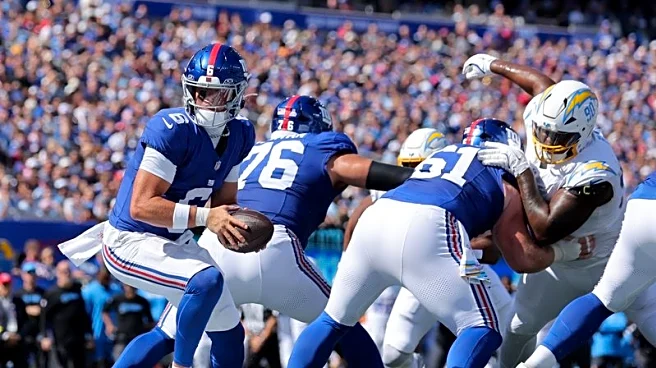What's Happening?
A new statue of Tina Turner was unveiled in her hometown of Brownsville, Tennessee, during the annual Tina Turner Heritage Days celebration. The 10-foot-tall bronze statue, created by Atlanta-based sculptor Fred Ajanogha, depicts the late music legend performing in a mini-skirt and heels while holding a microphone. Despite the sculptor's efforts to capture Turner's iconic hair, fans have expressed disappointment with the statue, criticizing it as a poor representation of the singer. Comments on social media platforms like Facebook and X have labeled the statue a 'tragedy' and suggested that Turner 'deserves better.'
Why It's Important?
The unveiling of the statue was intended to honor Tina Turner's legacy and celebrate her contributions to music and culture. However, the negative reception highlights the challenges of memorializing public figures in a way that satisfies their fans and respects their legacy. The criticism may prompt discussions about how best to commemorate influential artists and the importance of involving community feedback in such projects. This event underscores the sensitivity required in artistic representations of beloved figures and the potential impact on local tourism and cultural heritage initiatives.
What's Next?
The controversy surrounding the statue may lead to calls for its redesign or replacement, as fans continue to voice their dissatisfaction. The Brownsville Haywood County Chamber of Commerce and other stakeholders might consider engaging with the community to address concerns and explore alternative ways to honor Tina Turner's legacy. Future events or installations could be influenced by this feedback, potentially leading to more inclusive and representative tributes.
Beyond the Headlines
The statue's reception raises broader questions about the role of public art in cultural memory and identity. It highlights the complexities of artistic interpretation and the subjective nature of aesthetic appreciation. This situation may encourage artists and communities to collaborate more closely in the creation of public art, ensuring that it resonates with those it aims to honor and the wider public.













